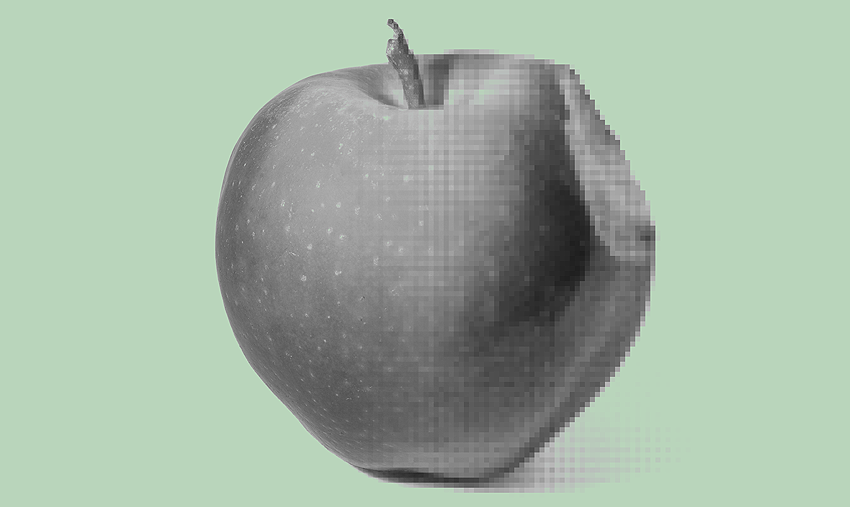Hello, I am Macintosh.
A look at 40 years of Apple being Apple

“Wow. What was that?”
That was the reaction of John Madden and Pat Summerall from CBS right after the first-ever Apple Macintosh commercial, at Super Bowl XVIII in 1984. The ad didn’t even show the actual computer, which would be introduced to the world two days later– exactly 40 years ago.
Instead, the commercial was based on George Orwell’s Nineteen Eighty-Four and directed by Ridley Scott. It had a dark dystopian feel, with robot-like men marching in sync into a large hall with a screen featuring Big Brother that represented Apple’s competition—IBM’s Big Blue. During the 60 second “film,” we see glimpses of a young female athlete sporting Apple’s rainbow logo and a sledgehammer, who eventually runs through the hall, interrupting the “event” by throwing the sledgehammer at the screen.
Only in the final seconds of the ad did we get the tease: “On January 24th, Apple Computer will introduce Macintosh. And you’ll see why 1984 won’t be like ‘1984.’”
A few days later, during Apple’s annual shareholders meeting, a pre-turtleneck Steve Jobs walked onto the stage in a double-breasted suit and bow tie and said, “IBM wants it all, and is aiming its guns on its last obstacle to industry control—Apple. Will Blue dominate the entire computer industry, the entire information age? Was George Orwell right?” (Dang, Steve. Tell us how you really feel.)
Jobs then walked over to a large black bag, unzipped it, and unveiled the Macintosh to thunderous applause. He inserted a floppy disk and demonstrated the Macintosh’s abilities, to the then-current theme from Chariots of Fire. “Hello, I am Macintosh,” said the computer.
Pioneering or popularizing?
Was the Macintosh the first personal computer with a graphical user interface, the first computer made for office, home, or school use, or the first computer with a mouse? Every modern iDevice naysayer can tell you without hesitation: No, no, and no.
It was, however, the first computer that turned the personal computer into something everyone could use, with its clean and simple, empowering user experience. Apple made sure that learning to operate the Macintosh was so easy that anyone could do it, whether they wanted to type up a document, prepare a spreadsheet, or play video games. Its graphical user interface included point-and-click functions instead of keyboard commands, plus drop-down menus, windows, icons. Even the idea of system-wide cut, copy, and paste functions were popularized by the Mac–and all at a price point of $2,499 (about $7,500 today), which at least some households could afford.
“Our job is to figure out what they’re going to want before they do,” Jobs famously said. “People don’t know what they want until you show it to them.”
This philosophy worked out well: The Mac quickly outpaced rival computers from Amiga, Atari, and Commodore to take second place in market share behind the IBM PC.
The Apple Legacy
As they would time and again after Jobs left in 1985 and returned in ‘97, his team fused form and function to move computer design forward. He was famously as obsessed with beautiful design as he was with functionality and usability – but ultimately he knew that both were important.
“The design of the Mac wasn’t what it looked like, although that was part of it,” he once said. “Primarily, it was how it worked.”
And it worked, starting with the iMac in 1998. After that, Apple’s track record reads like a gadget hall of fame: the iPod in 2001, iPhone in 2007, iPad in 2010, and Apple Watch in 2015 (after Jobs’s 2011 death). In fact, the new products have supplanted the Mac as their main revenue driver: in the fourth reporting quarter of 2023, Apple made almost 50% of its revenue from the iPhone, followed by “services” and wearables. The Mac was just 8.5 percent of the revenue, with iPad right on its heels at 7.2.
As the market continues to shift, commentators have wondered for years now if Apple has “lost its design mojo.” But meanwhile, with a market cap of nearly $3 trillion, it’s the second largest company in the world – neck-and-neck with Microsoft, the inheritor of much of IBM’s legacy. So they may no longer be that metaphorical athlete, crashing the party and throwing sledgehammers at screens, disrupting the status quo.But there’s a decent chance you’re enjoying their GUI right now.
